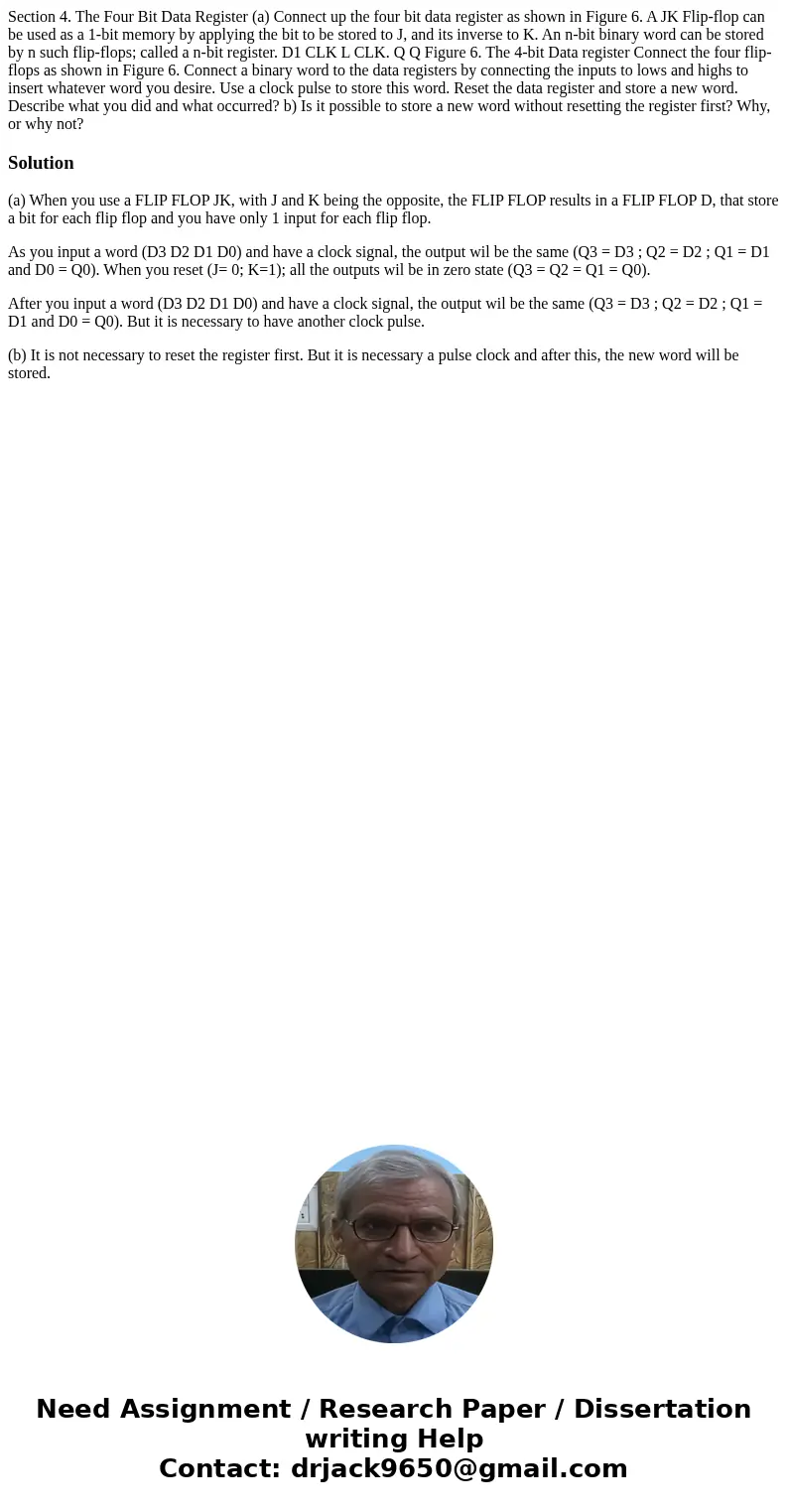Section 4 The Four Bit Data Register a Connect up the four b
Section 4. The Four Bit Data Register (a) Connect up the four bit data register as shown in Figure 6. A JK Flip-flop can be used as a 1-bit memory by applying the bit to be stored to J, and its inverse to K. An n-bit binary word can be stored by n such flip-flops; called a n-bit register. D1 CLK L CLK. Q Q Figure 6. The 4-bit Data register Connect the four flip-flops as shown in Figure 6. Connect a binary word to the data registers by connecting the inputs to lows and highs to insert whatever word you desire. Use a clock pulse to store this word. Reset the data register and store a new word. Describe what you did and what occurred? b) Is it possible to store a new word without resetting the register first? Why, or why not? 
Solution
(a) When you use a FLIP FLOP JK, with J and K being the opposite, the FLIP FLOP results in a FLIP FLOP D, that store a bit for each flip flop and you have only 1 input for each flip flop.
As you input a word (D3 D2 D1 D0) and have a clock signal, the output wil be the same (Q3 = D3 ; Q2 = D2 ; Q1 = D1 and D0 = Q0). When you reset (J= 0; K=1); all the outputs wil be in zero state (Q3 = Q2 = Q1 = Q0).
After you input a word (D3 D2 D1 D0) and have a clock signal, the output wil be the same (Q3 = D3 ; Q2 = D2 ; Q1 = D1 and D0 = Q0). But it is necessary to have another clock pulse.
(b) It is not necessary to reset the register first. But it is necessary a pulse clock and after this, the new word will be stored.

 Homework Sourse
Homework Sourse